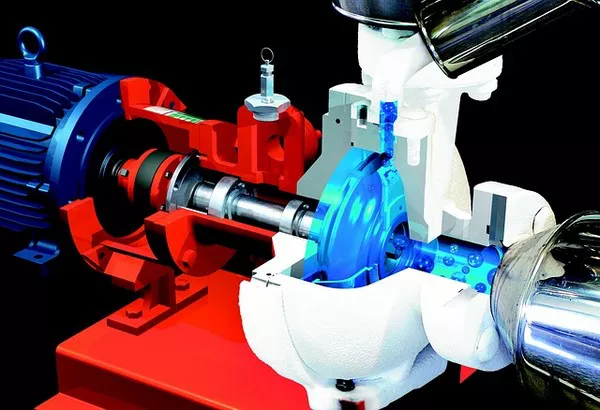In recent years, technological advancements in the field of refrigeration have led to the development of dual evaporator refrigerators. These sophisticated appliances offer improved cooling performance and enhanced food preservation capabilities compared to traditional single-evaporator refrigerators. In this article, we will explore the inner workings of a dual evaporator refrigerator, discussing its components, operational principles, and the benefits it brings to modern households.
Understanding the Dual Evaporator Refrigerator
A dual evaporator refrigerator is a type of refrigerator that utilizes two separate cooling systems to maintain different temperature zones within the appliance. Unlike conventional single-evaporator refrigerators, which use a single cooling system to regulate the temperature throughout the entire fridge and freezer compartments, dual evaporator models provide independent cooling for each section. One evaporator is dedicated to the refrigerator compartment, while the other handles the freezer compartment.
Components of a Dual Evaporator Refrigerator
1. Compressor:
The compressor is the heart of any refrigerator system. It is responsible for compressing the refrigerant gas, increasing its pressure, and turning it into a high-temperature, high-pressure gas. This compressed gas is crucial for the cooling process.
2. Condenser Coils:
The high-pressure refrigerant gas flows from the compressor to the condenser coils, located either at the back or the bottom of the refrigerator. Here, the gas releases heat to the surrounding environment, transforming into a high-pressure liquid.
3. Expansion Valve:
The high-pressure liquid refrigerant then moves through the expansion valve, which reduces its pressure, causing it to transform into a low-pressure, low-temperature mixture of liquid and gas. This change in pressure is essential for the cooling process.
4. Evaporator Coils:
The low-pressure, low-temperature refrigerant mixture enters the evaporator coils in both the freezer and refrigerator compartments. As it flows through these coils, it absorbs heat from the respective compartments, cooling them down.
5. Dual Evaporator System:
In a dual evaporator refrigerator, there are two sets of evaporator coils—one for the refrigerator compartment and another for the freezer compartment. Each evaporator operates independently, allowing precise control over the temperature of each section.
6. Fans:
To ensure even distribution of the cold air within the compartments, fans are employed in both the refrigerator and freezer sections. These fans help circulate the cooled air throughout the interior, maintaining a consistent temperature and optimal humidity levels.
Operational Principles of a Dual Evaporator Refrigerator
The dual evaporator system in these refrigerators works on the principles of thermodynamics. The refrigerant, as it evaporates in the evaporator coils, absorbs heat from the surrounding air. By removing heat from the compartments separately, the refrigerator can maintain two distinct temperature zones—one for fresh food storage and another for frozen items.
In a conventional single-evaporator refrigerator, the cooling system has to strike a balance between the refrigerator and freezer temperatures, often resulting in compromises. For example, setting a lower temperature to achieve sub-zero freezing temperatures in the freezer can lead to unnecessarily cold conditions in the refrigerator, potentially affecting the freshness of perishable items. The dual evaporator system eliminates this issue by allowing separate temperature control for each compartment.
Benefits of a Dual Evaporator Refrigerator
1. Enhanced Food Preservation:
With independent cooling systems for the refrigerator and freezer, a dual evaporator refrigerator provides better humidity control in the fresh food compartment. This prevents food from drying out and helps maintain its natural moisture, texture, and flavor for an extended period.
2. Prevents Odor Transfer:
In single-evaporator refrigerators, odors from the freezer can transfer to the refrigerator compartment and vice versa. The dual evaporator system prevents this cross-contamination, ensuring that the odors of one compartment do not affect the other.
3. Energy Efficiency:
Dual evaporator refrigerators are often more energy-efficient than their single-evaporator counterparts. Since each compartment operates independently, the cooling system can adjust to the specific temperature needs of each section, reducing energy consumption.
4. Precise Temperature Control:
Dual evaporator systems allow users to set precise temperatures for the refrigerator and freezer compartments. This level of control enables users to customize the storage conditions for various types of food, optimizing freshness and prolonging shelf life.
Conclusion
Dual evaporator refrigerators represent a significant advancement in the world of refrigeration technology. By employing two separate cooling systems, these appliances offer enhanced food preservation, prevent odor transfer, and provide energy-efficient performance. Their precise temperature control and independent operation make them an ideal choice for modern households seeking a reliable and efficient refrigeration solution. As technology continues to evolve, we can expect further innovations in refrigeration systems, driving even greater efficiency and sustainability in the future.

